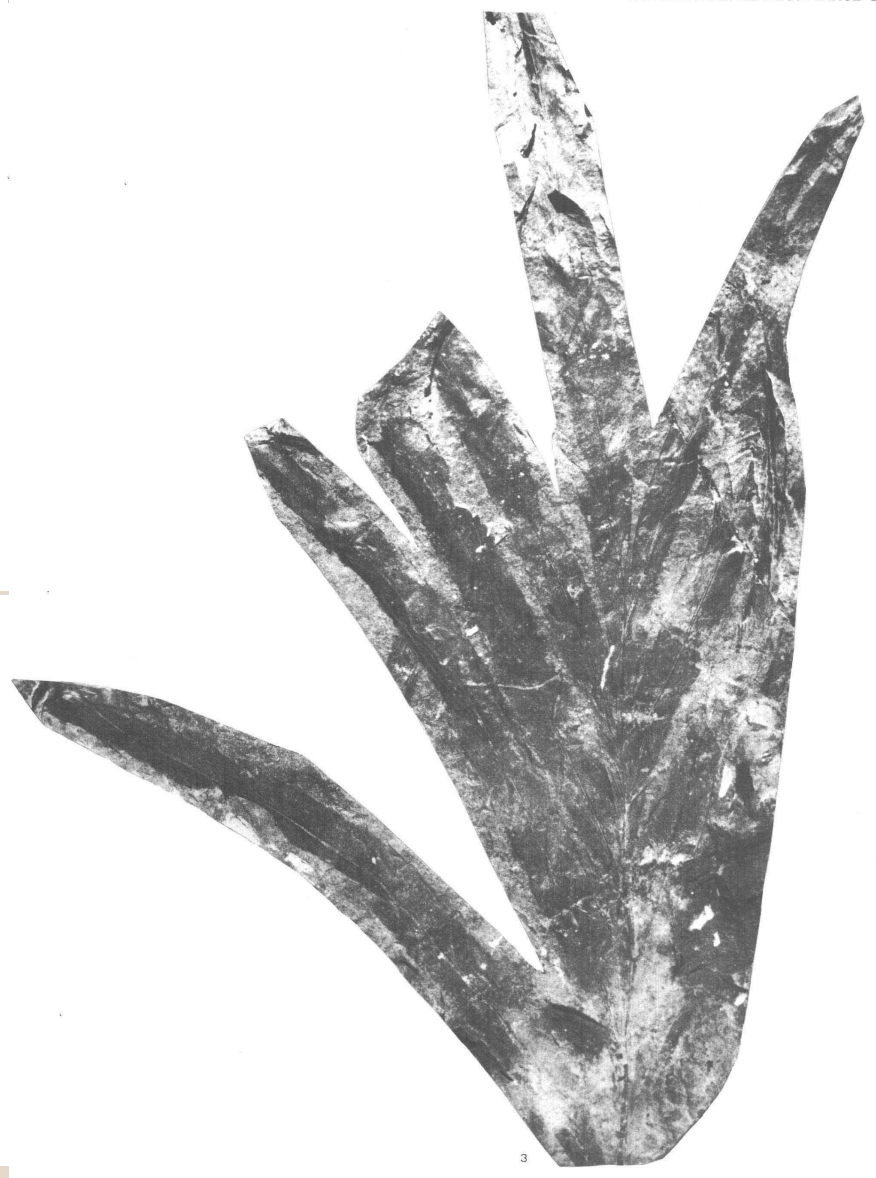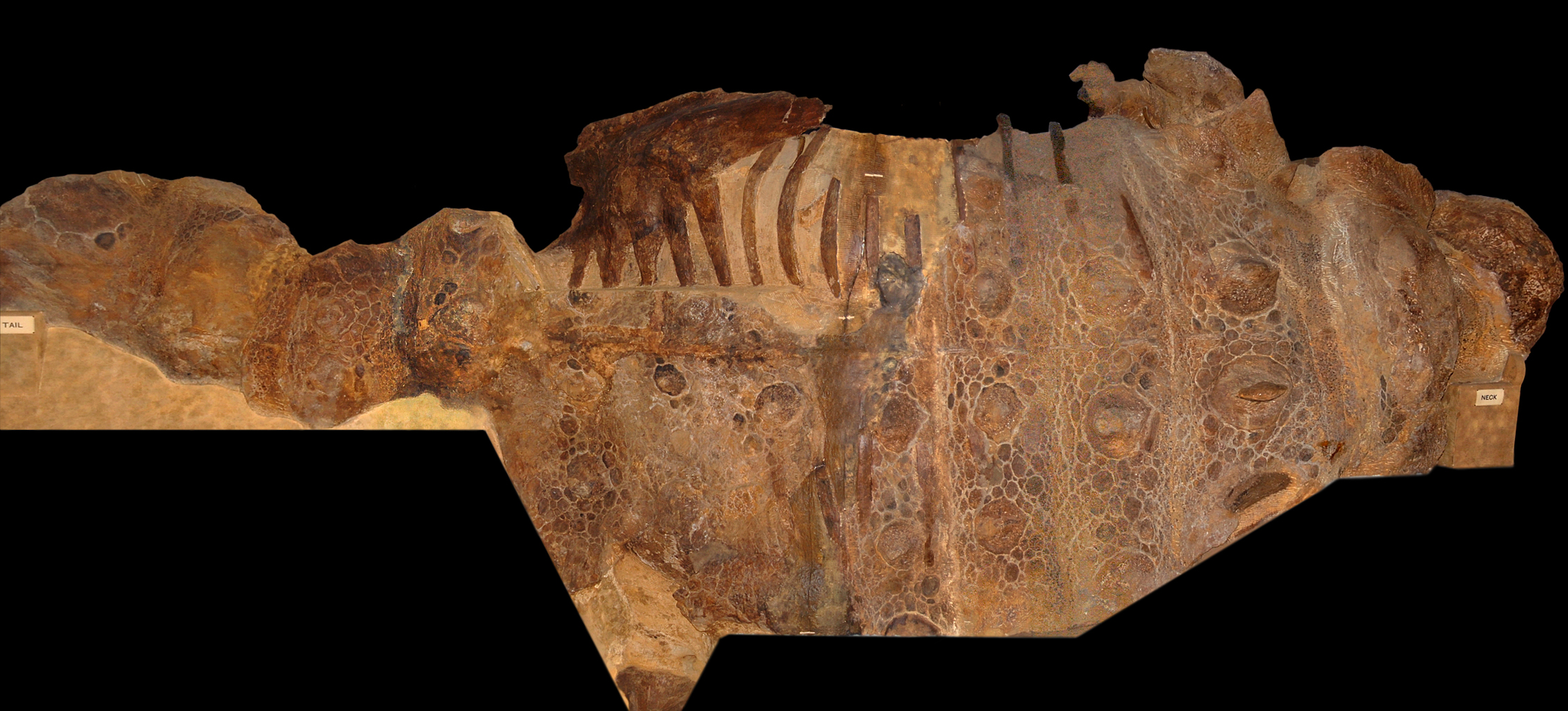|
Egg Mountain
The Two Medicine Formation is a geological formation, or rock body, in northwestern Montana and southern Alberta that was deposited between 82.4 Ma and 74.4 Ma, during Campanian (Late Cretaceous) time. It crops out to the east of the Rocky Mountain Overthrust Belt, and the western portion (about thick) of this formation is folded and faulted while the eastern part, which thins out into the Sweetgrass Arch, is mostly undeformed plains. Below the formation are the nearshore (beach and tidal zone) deposits of the Virgelle Sandstone, and above it is the marine Bearpaw Shale. Throughout the Campanian, the Two Medicine Formation was deposited between the western shoreline of the Late Cretaceous Interior Seaway and the eastward advancing margin of the Cordilleran Overthrust Belt. The Two Medicine Formation is mostly sandstone, deposited by rivers and deltas. History of research In 1913, a US Geological Survey crew headed by Eugene Stebinger and a US National Museum crew headed by ... [...More Info...] [...Related Items...] OR: [Wikipedia] [Google] [Baidu] |
Geological Formation
A geological formation, or simply formation, is a body of rock having a consistent set of physical characteristics (lithology) that distinguishes it from adjacent bodies of rock, and which occupies a particular position in the layers of rock exposed in a geographical region (the stratigraphic column). It is the fundamental unit of lithostratigraphy, the study of strata or rock layers. A formation must be large enough that it can be mapped at the surface or traced in the subsurface. Formations are otherwise not defined by the thickness (geology), thickness of their rock strata, which can vary widely. They are usually, but not universally, tabular in form. They may consist of a single lithology (rock type), or of alternating beds of two or more lithologies, or even a heterogeneous mixture of lithologies, so long as this distinguishes them from adjacent bodies of rock. The concept of a geologic formation goes back to the beginnings of modern scientific geology. The term was used by ... [...More Info...] [...Related Items...] OR: [Wikipedia] [Google] [Baidu] |
Sandstone
Sandstone is a Clastic rock#Sedimentary clastic rocks, clastic sedimentary rock composed mainly of grain size, sand-sized (0.0625 to 2 mm) silicate mineral, silicate grains, Cementation (geology), cemented together by another mineral. Sandstones comprise about 20–25% of all sedimentary rocks. Most sandstone is composed of quartz or feldspar, because they are the most resistant minerals to the weathering processes at the Earth's surface. Like uncemented sand, sandstone may be imparted any color by impurities within the minerals, but the most common colors are tan, brown, yellow, red, grey, pink, white, and black. Because sandstone beds can form highly visible cliffs and other topography, topographic features, certain colors of sandstone have become strongly identified with certain regions, such as the red rock deserts of Arches National Park and other areas of the Southwestern United States, American Southwest. Rock formations composed of sandstone usually allow the p ... [...More Info...] [...Related Items...] OR: [Wikipedia] [Google] [Baidu] |
1977 In Paleontology
Plants Ferns Conifers Angiosperms Invertebrates Mollusks Conodonts Fish Archosauriformes Non-avian dinosaurs Data courtesy of George Olshevsky's dinosaur genera list. Birds Pterodactyls Expeditions, field work, and fossil discoveries * Trexler found hadrosaur remains west of Choteau, Montana in strata of the Two Medicine Formation The Two Medicine Formation is a geological formation, or rock body, in northwestern Montana and southern Alberta that was deposited between 82.4 Ma and 74.4 Ma, during Campanian (Late Cretaceous) time. It crops out to the east of the Rocky Mountai .... Popular culture Literature * ''The Year of the Dinosaur'' Edwin H. Colbert and illustrated by his wife, Margaret was published. This story describes a year in the life of a " brontosaur" and was an attempt to educate the reader about prehistory through a fictional portrayal of it. References {{Reflist, refs= {{cite book, last=Sarjeant , first=W. A. S. , year=2001 , chapter=Di ... [...More Info...] [...Related Items...] OR: [Wikipedia] [Google] [Baidu] |
World War II
World War II or the Second World War (1 September 1939 – 2 September 1945) was a World war, global conflict between two coalitions: the Allies of World War II, Allies and the Axis powers. World War II by country, Nearly all of the world's countries participated, with many nations mobilising all resources in pursuit of total war. Tanks in World War II, Tanks and Air warfare of World War II, aircraft played major roles, enabling the strategic bombing of cities and delivery of the Atomic bombings of Hiroshima and Nagasaki, first and only nuclear weapons ever used in war. World War II is the List of wars by death toll, deadliest conflict in history, causing World War II casualties, the death of 70 to 85 million people, more than half of whom were civilians. Millions died in genocides, including the Holocaust, and by massacres, starvation, and disease. After the Allied victory, Allied-occupied Germany, Germany, Allied-occupied Austria, Austria, Occupation of Japan, Japan, a ... [...More Info...] [...Related Items...] OR: [Wikipedia] [Google] [Baidu] |
1933 In Paleontology
References * Makovicky, P. J., 2001, A Montanoceratops cerorhynchus (Dinosauria: Ceratopsia) braincase from the Horseshoe Canyon Formation of Alberta: In: Mesozoic Vertebrate Life, edited by Tanke, D. H., and Carpenter, K., Indiana University Press, pp. 243–262. * Trexler, D., 2001, Two Medicine Formation, Montana: geology and fauna: In: Mesozoic Vertebrate Life, edited by Tanke, D. H., and Carpenter, K., Indiana University Press, pp. 298–309. 1930s in paleontology Paleontology 3 ... [...More Info...] [...Related Items...] OR: [Wikipedia] [Google] [Baidu] |
Barnum Brown
Barnum Brown (February 12, 1873 – February 5, 1963), commonly referred to as Mr. Bones, was an American paleontologist. He discovered the first documented remains of ''Tyrannosaurus'' during a career that made him one of the most famous fossil hunters working from the late Victorian era into the early 20th century. Family and early life Barnum Brown was born in Carbondale, Kansas on February 12, 1873 to William and Clara Silver Brown. Brown's parents moved to Kansas in 1859, traveling by covered wagon with their daughter, Melissa. Their second daughter, Alice Elizabeth, was born in 1860 in Osage County, Kansas, where the family would build a one-room cabin on top of a coal seam. William made a living in Kansas first by raising corn, hogs, and cattle, but the political turmoil of Bleeding Kansas in the late 1850s and 1860s led to arson and theft of crops and livestock; he supported the family by digging and selling coal, as well as hauling supplies for the government with a fr ... [...More Info...] [...Related Items...] OR: [Wikipedia] [Google] [Baidu] |
Edmontonia Rugosidens
''Edmontonia'' is a genus of panoplosaurin nodosaurid dinosaur from the Late Cretaceous Period. It is part of the Nodosauridae, a family within Ankylosauria. It is named after the Edmonton Formation (now the Horseshoe Canyon Formation in Canada), the unit of rock where it was found. Description Size and general build ''Edmontonia'' was bulky, broad and tank-like. Its length has been estimated at 6.6 m (22 ft). In 2010, Gregory S. Paul considered both main ''Edmontonia'' species, ''E. longiceps'' and ''E. rugosidens'', to be equally long at six metres and weigh three tonnes.Paul, G.S., 2010, ''The Princeton Field Guide to Dinosaurs'', Princeton University Press p. 238 ''Edmontonia'' had small, oval ridged bony plates on its back and head and many sharp spikes along its sides. The four largest spikes jutted out from the shoulders on each side, the second of which was split into subspines in ''E. rugosidens'' specimens. Its skull had a pear-like shape when viewed from ... [...More Info...] [...Related Items...] OR: [Wikipedia] [Google] [Baidu] |
Styracosaurus Ovatus
''Styracosaurus'' ( ; meaning "spiked lizard" from the Ancient Greek / "spike at the butt-end of a spear-shaft" and / "lizard") is an extinct genus of herbivorous ceratopsian dinosaur from the Late Cretaceous (Campanian stage) of North America. It had four to six long parietal spikes extending from its neck frill, a smaller jugal horn on each of its cheeks, and a single horn protruding from its nose, which may have been up to long and wide. The function or functions of the horns and frills have been debated for many years. ''Styracosaurus'' was a relatively large dinosaur, reaching lengths of and weighing about . It stood about tall. ''Styracosaurus'' possessed four short legs and a bulky body. Its tail was rather short. The skull had a beak and shearing cheek teeth arranged in continuous dental batteries, suggesting that the animal sliced up plants. Like other ceratopsians, this dinosaur may have been a herd animal, travelling in large groups, as suggested by bone beds. N ... [...More Info...] [...Related Items...] OR: [Wikipedia] [Google] [Baidu] |
1935 In Paleontology
Plants Conifers Flowering plants Arthropods Insects Sauropterygians New taxa Vertebrates Dinosaurs Synapsids Expeditions, field work, and fossil discoveries * Charles W. Gilmore, Charles Gilmore returned to prospect for fossils in the Two Medicine Formation.Trexler, D., 2001, Two Medicine Formation, Montana: geology and fauna: In: Mesozoic Vertebrate Life, edited by Tanke, D. H., and Carpenter, K., Indiana University Press, pp. 298–309. Institutions and organizations * The Calgary Public Museum of Alberta, Canada closed due to financial problems triggered by the Great Depression. By this point the museum had accumulated roughly 7500 different items of both natural and man-made origin. The collections were stored in another Calgary building called the Coste House.D. H. Tanke. 2010. Lost in plain sight: rediscovery of William E. Cutler's missing Eoceratops. In M. J. Ryan, B. J. Chinnery-Allgeier, D. A. Eberth (eds.), New Perspectives on Horned Dinosaurs: T ... [...More Info...] [...Related Items...] OR: [Wikipedia] [Google] [Baidu] |
1928 In Paleontology
References * Trexler, D., 2001, Two Medicine Formation, Montana: geology and fauna: In: Mesozoic Vertebrate Life, edited by Tanke, D. H., and Carpenter, K., Indiana University Press, pp. 298–309. 1920s in paleontology Paleontology 8 ... [...More Info...] [...Related Items...] OR: [Wikipedia] [Google] [Baidu] |
1914 In Paleontology
References * Trexler, D., 2001, Two Medicine Formation, Montana: geology and fauna: In: Mesozoic Vertebrate Life, edited by Tanke, D. H., and Carpenter, K., Indiana University Press, pp. 298–309. 1910s in paleontology 1914 in science, Paleontology 4 ... [...More Info...] [...Related Items...] OR: [Wikipedia] [Google] [Baidu] |
Charles W
The F/V ''Charles W'', also known as Annie J Larsen, is a historic fishing schooner anchored in Petersburg, Alaska. At the time of its retirement in 2000, it was the oldest fishing vessel in the fishing fleet of Southeast Alaska, and the only known wooden fishing vessel in the entire state still in active service. Launched in 1907, she was first used in the halibut fisheries of Puget Sound and the Bering Sea as the ''Annie J Larsen''. In 1925 she was purchased by the Alaska Glacier Seafood Company, refitted for shrimp trawling, and renamed ''Charles W'' in honor of owner Karl Sifferman's father. The company was one of the pioneers of the local shrimp fishery, a business it began to phase out due to increasing competition in the 1970s. The ''Charles W'' was the last of the company's fleet of ships, which numbered twelve at its height. The boat was acquired in 2002 by the nonprofit Friends of the ''Charles W''. The boat was listed on the National Register of Historic Place ... [...More Info...] [...Related Items...] OR: [Wikipedia] [Google] [Baidu] |










